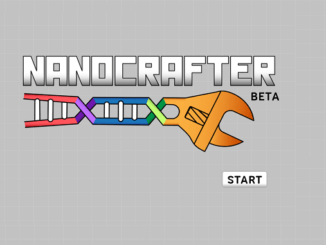
On its surface, it looks like just another science puzzle game. In reality, the game is part of a broader goal to enable non-scientists to contribute to synthetic biology research.
‘It’ is Nanocrafter, a project created by researchers and game developers at the Center for Game Science at the University of Washington. They are the same team behind the citizen science project FoldIt.
“Most citizen science games are designed to gather data for a specific research question. Players may need to be good at pattern recognition, abstract reasoning, or other cognitive skills. Our focus at Nanocrafter is different,” says Nanocrafter Project Lead Jonathan Barone. “The project isn’t intended to address any existing research. Rather, we are interested in developing a user community that is familiar enough with the principles and parameters of synthetic biology to generate new ideas, identify new questions and create their own solutions.”
Synthetic biology is an engineering discipline within a biological context. The field uses techniques and principles from a number of different disciplines to create biological devices and understand biological systems. Synthetic biologists use biological components like DNA, RNA or proteins as their building materials. For example, scientists can insert DNA or proteins composites into a bacterial host to increase or refine a biological pathways involved in drug synthesis. In other cases, the molecules are used in ways that are unrelated to their normal biological function. A DNA fragment can be constructed as a biosensor, fluorescing in the presence of a pathogen. Or in a particularly wild example, DNA can be used to store data like a computer hard drive.
Read the full article by Carolyn Graybeal on blogs.discovermagazine.com
http://blogs.discovermagazine.com/citizen-science-salon/2015/02/22/nanocrafter-playing-game-synthetic-biology/#.V6HXFLgrKM8


